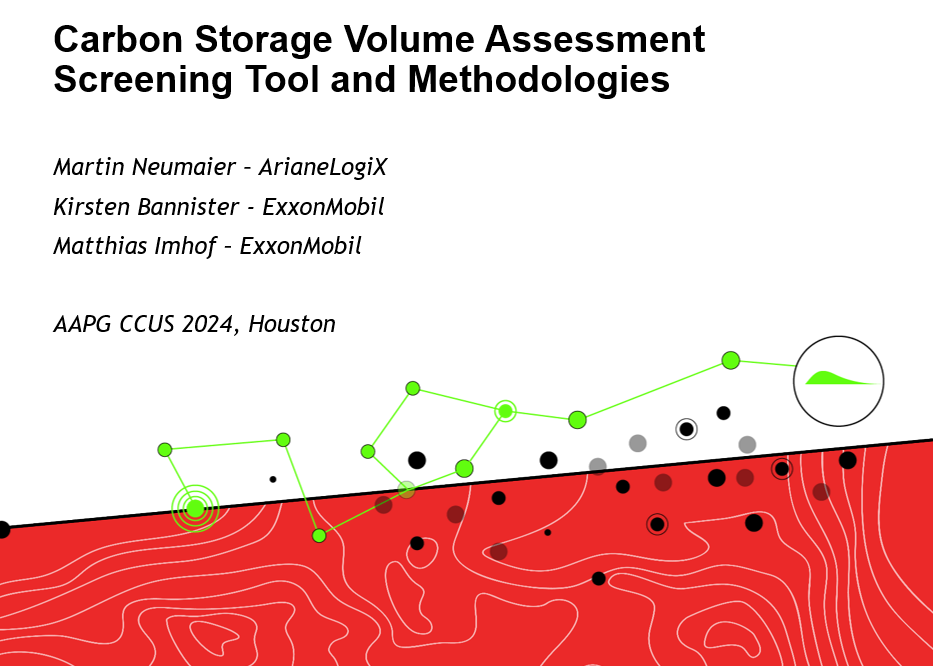AAPG CCUS Conference, Houston, 2024
Martin Neumaier – ArianeLogiX
Kirsten Bannister – ExxonMobil
Matthias Imhof – ExxonMobil
Abstract
The industry is currently exploring entire countries, margins and basins for carbon storage sites. Whereas the experience from the oil and gas industry is a good starting point, carbon storage screening comes with its own challenges and the exploration staff, workflows, tools and decision strategy need to be adapted accordingly.
In the hydrocarbon industry, the selection along the “exploration funnel” is dominated by geoscientists who establish play concepts and mature leads into prospects. The technical studies are mostly focused on rock properties and subsurface architecture, much less on fluids. In the relatively new domain of carbon storage, exploration teams and workflows need to present a healthy balance between traditional geoscientists investigating regional geology, rocks and pore space, and reservoir engineers focusing on PVT and fluid flow, already at the screening level.
CO2 can be stored in depleted fields with a very high data density, in structures which did not receive sufficient petroleum charge, generally with some data available, or in unstructured regional aquifers with very sparse data, also located in non-petroleum basins. Each of these storage site types present their own advantages and difficulties, and the data dispersity represents another challenge. Comparing risk and uncertainties of a depleted field prospect versus a large reginal aquifer within a portfolio is difficult. But a bigger storage complex can be a combination of all of those end members, e,g,. a fill to spill chain within a regional aquifer.
Finally, one aspect where the carbon storage domain differs from traditional oil exploration is the validation of prospect predictions. After drilling, an oil prospect is generally classified as a dry hole or a discovery. The exploration risk (e.g., of finding oil at all, or an effective reservoir) is lifted, and appraisal drilling will test the commerciality. This is only partly the case for CS, where no true discovery exists. Whereas reservoir presence and effectiveness may be considered proven with one well, finding a good seal at the well location does not remove the seal risk (as opposed to finding an oil accumulation which by its presence proves a laterally extensive seal). Generally, the successful sealing of CO2 in any structure or aquifer can only be predicted, and containment of the storage complex remains to be proven on the long term (“residual risk”), as opposed to possible failure reasons which can be eliminated with a few well tests (“static risk”).
